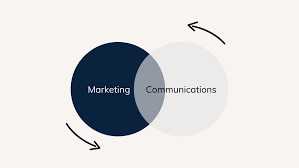In the dynamic realm of marketing, effective communication serves as the backbone for establishing and maintaining connections between businesses and their target audiences. This multifaceted process involves the strategic transmission of messages to convey information, build relationships, and influence consumer behavior. Let’s delve into the intricacies of communication in the context of marketing, exploring its significance, key components, and evolving trends.
Significance of Communication in Marketing
1. Building Brand Identity
Communication plays a pivotal role in shaping and communicating a brand’s identity. Consistent messaging across various channels helps create a distinct brand image, fostering recognition and trust among consumers.
2. Creating Awareness
At the core of marketing communication is the goal of creating awareness. Through various channels such as advertising, public relations, and social media, businesses aim to make their target audience aware of their products, services, and value propositions.
3. Facilitating Consumer Engagement
Effective communication encourages two-way interaction between businesses and consumers. Engaging content, interactive campaigns, and social media interactions contribute to building a community around the brand.
4. Driving Sales
The ultimate objective of marketing is often to drive sales. Well-crafted communication strategies, including persuasive advertising and compelling sales messages, are essential for converting potential customers into paying ones.
5. Managing Reputation
Communication is critical for managing and safeguarding a brand’s reputation. Timely and transparent communication during crises helps mitigate damage and rebuild trust with stakeholders.
Components of Marketing Communication
1. Identifying the Target Audience
Before crafting any communication strategy, marketers must identify their target audience. Understanding the demographics, preferences, and behaviors of the audience ensures that the messages resonate effectively.
2. Message Development
Crafting a compelling message is an art. Marketers need to develop messages that not only convey information but also evoke emotions and align with the brand’s positioning.
3. Choosing Communication Channels
The choice of communication channels is crucial. Whether it’s traditional media, digital platforms, or a combination of both, selecting the right channels ensures that the message reaches the intended audience.
4. Feedback Mechanisms
Two-way communication is imperative. Establishing feedback mechanisms, such as customer surveys, social media interactions, and reviews, allows businesses to understand customer sentiments and adapt their strategies accordingly.
Consistency is key to building a strong brand. From visual elements to messaging, maintaining consistency across all communication platforms reinforces brand identity and fosters trust.
Evolving Trends in Marketing Communication
1. Rise of Influencer Marketing
Influencer marketing leverages individuals with a significant following on social media to promote products. This trend capitalizes on the trust that influencers have built with their audiences.
2. Personalization through Data Analytics
Advancements in data analytics enable marketers to personalize communication based on individual preferences and behaviors. Personalized content enhances customer engagement and satisfaction.
3. Interactive Content and Experiences
The demand for interactive content, such as quizzes, polls, and augmented reality experiences, is on the rise. Interactive elements enhance engagement and provide a memorable brand experience.
4. Integration of AI and Chatbots
Artificial intelligence (AI) and chatbots are increasingly being integrated into communication strategies. They offer instant responses, streamline customer interactions, and provide personalized recommendations.
5. Video Dominance
Video content continues to dominate the marketing landscape. Short-form videos, live streaming, and interactive video experiences are gaining popularity for their ability to capture and retain audience attention.
Conclusion
In conclusion, communication in marketing is a dynamic and essential component that involves not just transmitting information but building relationships, fostering engagement, and influencing consumer behavior. As the marketing landscape evolves, staying attuned to emerging trends and leveraging innovative communication strategies will be key to success in this ever-changing field.

